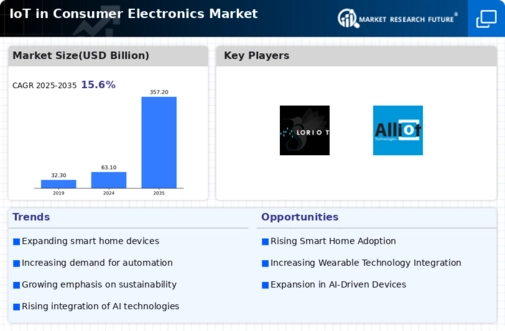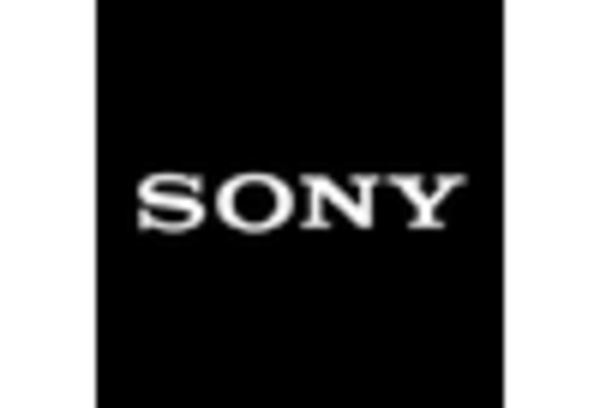Market Trends
Key Emerging Trends in the IoT Consumer Electronics Market
Smart refrigerators that suggest meals based on ingredients that are readily available to intelligent room thermostats that recognize user preferences—consumer electronics are becoming more and more linked, giving users greater control and convenience over their devices. In the context of the Internet of Things, wearable technology is rapidly becoming more common. This trend enhances the use of wearable technology and contributes to the broader trend of personalized and data-driven interactions, especially in the field of health and wellness. Intelligent assistants that use voice commands are spreading throughout consumer devices, influencing how the Internet of Things is viewed in day-to-day life. Devices such as smart speakers, connected TVs, and, rather ironically, clever house lighting systems impact voice recognition technology to enable hands-free operation and cooperation. This tendency reflects the growing need among executives for natural and consistent user interfaces (UIs) that improve the customer experience and operate on their devices. One area where the IoT consumer electronics industry is converging is the connected home environment. Smart houses use Internet of Things devices such as intelligent lighting controls, security cameras, and locks to create a networked system that can be managed from a smartphone app or central hub. Home computerization is changing because of this trend, which gives customers the ability to monitor and control many areas of their houses remotely while also enhancing security, energy efficiency, and overall comfort. Through linked cars, the automotive industry is witnessing the integration of IoT into electronics for consumers. Highlights such as continuous route, in-car theater configurations, and compatibility with various devices may be found in vehicles equipped with Internet of Things innovation. This trend is consistent with the evolving notion of astute and related adaptability, where cars play a crucial role in the larger Internet of Things ecosystem. A crucial role for edge processing is emerging in the market for IoT consumer devices. Edge registration enables devices to handle information locally rather than relying only on cloud-based processing, reducing idle time, and improving continuous responsiveness. This trend is particularly significant in scenarios where timely navigation is essential, such as intelligent home security systems and autonomous cars.








Leave a Comment